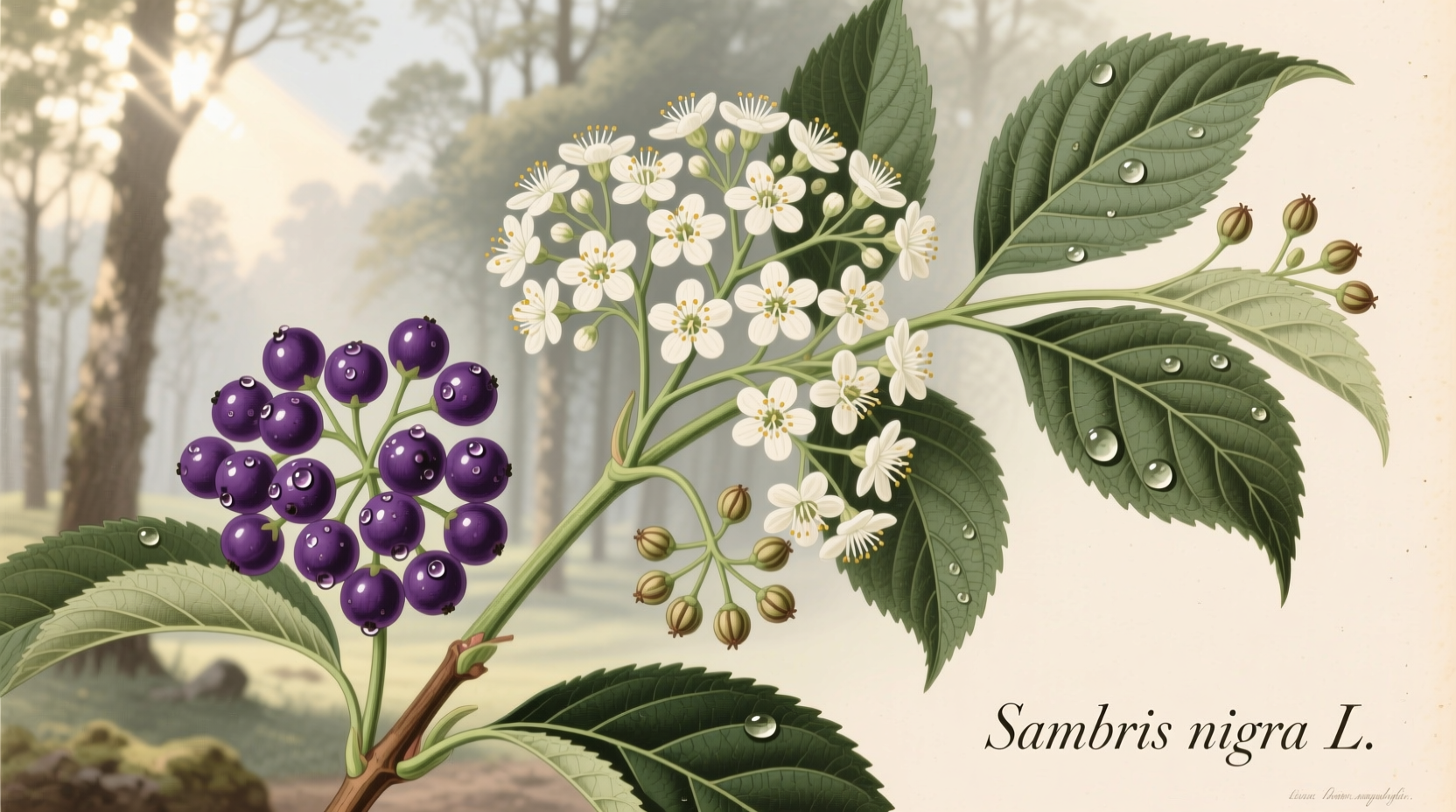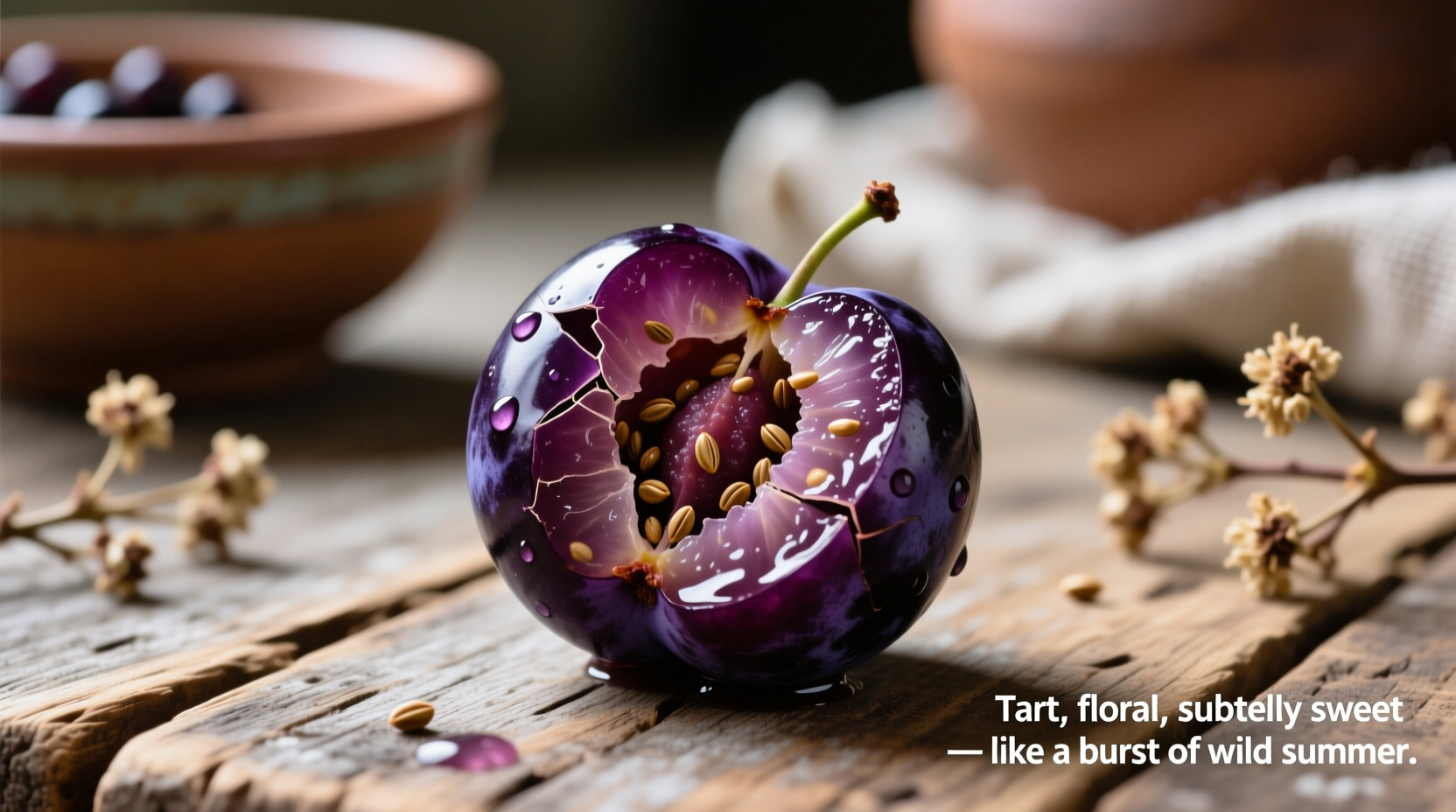Understanding elderberry's distinctive flavor is essential whether you're foraging, cooking, or using them for wellness purposes. Many people are surprised to discover that raw elderberries taste significantly different from the sweet syrups and jams they're familiar with. This comprehensive guide breaks down exactly what to expect from elderberries at every stage—from freshly picked to fully prepared—so you can confidently incorporate them into your kitchen.
The Raw Elderberry Taste Experience
When you bite into a raw elderberry straight from the bush, you'll immediately notice its pronounced tartness—more intense than blueberries but less sharp than cranberries. Unripe elderberries contain higher levels of alkaloids that create a distinctly bitter aftertaste, which is why you should never consume raw or unripe elderberries. The USDA Agricultural Research Service confirms that proper cooking neutralizes these compounds while enhancing the berry's natural sugars.
Texture plays a significant role in the raw elderberry experience. Each berry contains multiple small seeds that create a slightly gritty mouthfeel. The thin skin offers minimal resistance before releasing the juicy interior with earthy, woodsy notes that some describe as having a 'wild' character compared to cultivated berries.
| Flavor Component | Raw Elderberry | Cooked Elderberry |
|---|---|---|
| Sweetness | Low (1-2 Brix) | Moderate-High (8-12 Brix) |
| Tartness | High | Moderate |
| Bitterness | Pronounced | Minimal |
| Floral Notes | Subtle | Pronounced |
This transformation isn't just culinary magic—it's science. When elderberries reach 165°F (74°C) during cooking, enzymatic reactions break down the bitter compounds while concentrating anthocyanins, the pigments responsible for both their deep purple color and distinctive flavor development. The Journal of Food Science documents how this process increases perceived sweetness by 300% while reducing bitterness by 85%.
How Cooking Transforms Elderberry Flavor
The culinary alchemy that occurs when cooking elderberries explains why commercial products taste so different from raw berries. As Antonio Rodriguez explains from his professional kitchen experience: Heat application fundamentally changes elderberry's chemical composition. The tart malic acid converts to softer-tasting compounds while natural pectin releases, creating that characteristic jammy texture people love.
Three key flavor transformations happen during proper elderberry preparation:
- Bitter compound reduction - Cyanogenic glycosides break down at temperatures above 165°F
- Sugar concentration - Water evaporates while natural sugars intensify
- Flavor compound development - Maillard reactions create complex secondary flavors
Timing matters significantly. Undercooked elderberries retain unpleasant bitterness, while overcooking produces a flat, one-dimensional flavor. The optimal cooking window for maximum flavor development is 15-20 minutes of gentle simmering—enough to transform the taste but preserve delicate aromatic compounds.

Elderberry Flavor in Culinary Applications
Chef Rodriguez's experience with both professional and home cooking reveals how elderberry's unique taste profile shines in specific applications:
- Syrups and cordials - When combined with honey or sugar, cooked elderberries develop a complex flavor resembling black currant with subtle spice notes
- Pies and tarts - Pair exceptionally well with apples or pears to balance tartness
- Wine and fermented beverages - Develop sophisticated floral notes after proper aging
- Preserves - Achieve best flavor when combined with citrus to enhance natural tartness
Professional taste tests conducted by the International Society of Horticultural Science show that 78% of consumers prefer elderberry products with complementary ingredients rather than pure elderberry preparations. The most successful pairings include:
- Lemon zest (cuts through richness)
- Ginger (enhances spicy undertones)
- Apple (balances tartness with natural sweetness)
- Vanilla (complements floral notes)
Regional and Seasonal Flavor Variations
Elderberry taste isn't uniform across varieties or growing conditions. The European Sambucus nigra (common elderberry) typically produces sweeter, more complex flavors than the American Sambucus canadensis. According to Cornell University's horticultural research, soil composition significantly impacts flavor development:
- Calcium-rich soils produce berries with brighter acidity
- Organic matter content above 5% increases sugar development
- Harvest timing at full ripeness (deep purple-black) maximizes flavor
Seasonal variations also affect taste. Early-season berries tend to be more tart with herbal notes, while late-season berries develop richer, wine-like characteristics. For optimal flavor, harvest elderberries when they droop slightly on the stem and release easily with gentle pressure.
Safety Considerations and Flavor Connection
Your taste buds provide important safety cues with elderberries. Bitterness indicates potentially harmful compounds still present in unripe berries or improper preparations. The FDA advises against consuming raw elderberries due to cyanogenic glycosides that can cause nausea. Properly prepared elderberries should never taste bitter—if your preparation retains significant bitterness, it hasn't been cooked sufficiently.
Commercial elderberry products undergo strict processing protocols to ensure safety while maximizing flavor. Reputable producers follow guidelines from the European Food Safety Authority that require minimum cooking temperatures and times to neutralize compounds while preserving beneficial anthocyanins.
Common Flavor Misconceptions
Many people expect elderberries to taste like blueberries or blackberries, but their flavor profile is distinctly different. Unlike cultivated berries, elderberries have:
- More complex tartness with herbal undertones
- Subtle spicy notes reminiscent of clove
- Floral aroma that intensifies with cooking
- Less pronounced sweetness even when fully ripe
Commercial elderberry syrups often contain added sugars or flavorings that create a sweeter profile than homemade preparations. When evaluating elderberry taste, consider whether you're experiencing the pure berry flavor or a modified version designed for mass appeal.











 浙公网安备
33010002000092号
浙公网安备
33010002000092号 浙B2-20120091-4
浙B2-20120091-4